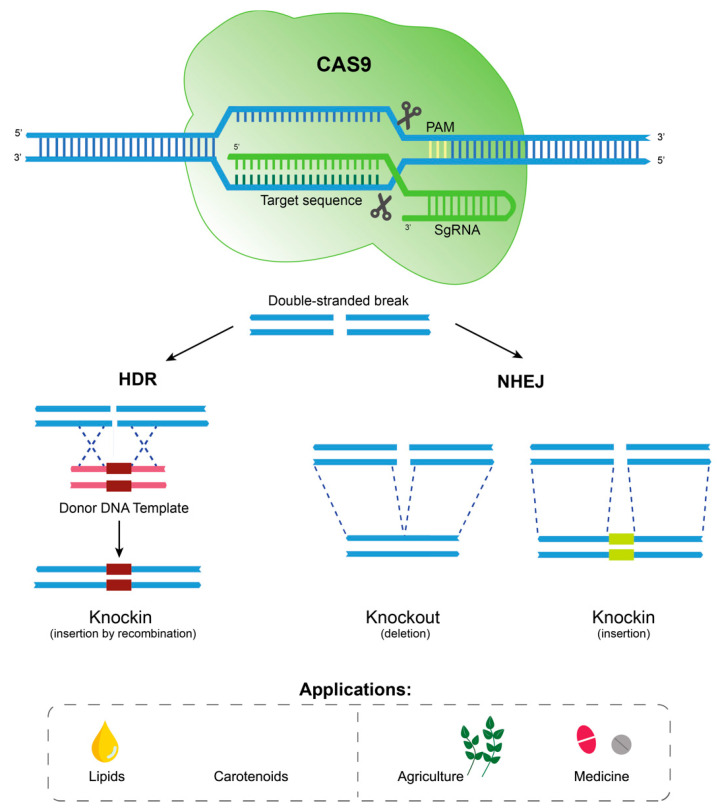Figure 6.
Genome editing using CRISPR-Cas9. The nuclease Cas9, with a custom single-guide RNA (SgRNA), cuts DNA on a specific sequence near a protospacer adjacent motif (PAM), a short sequence recognized by the enzyme downstream of the cleavage site. In the presence of exogenous DNA, homology-directed repair (HDR) can take place, generating a knockin mutant; otherwise, non-homologous end join (NHEJ) repair might occur, so that the ends of the DNA fragments are brought together. The mutant might contain a disrupted target gene (knockout) or an inserted gene or DNA fragment (knockin), which could generate a loss- and/or gain-of-function phenotype. The main applications of this technology are related to improving lipid content and profile, the production of high-value compounds such as carotenoids, the development of tolerance for agroindustrial applications, and the production of recombinant proteins for pharmaceutical and medical applications.

